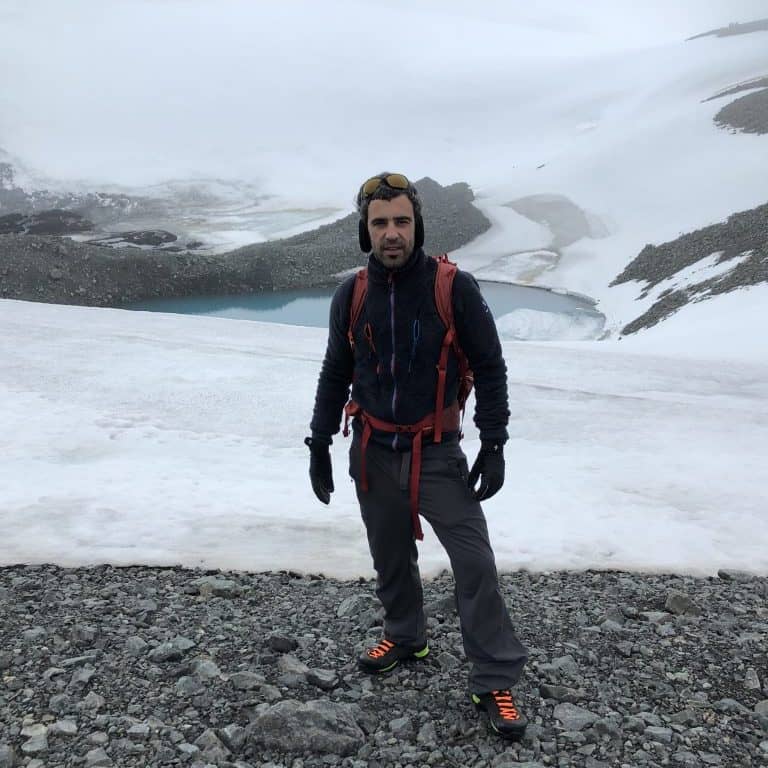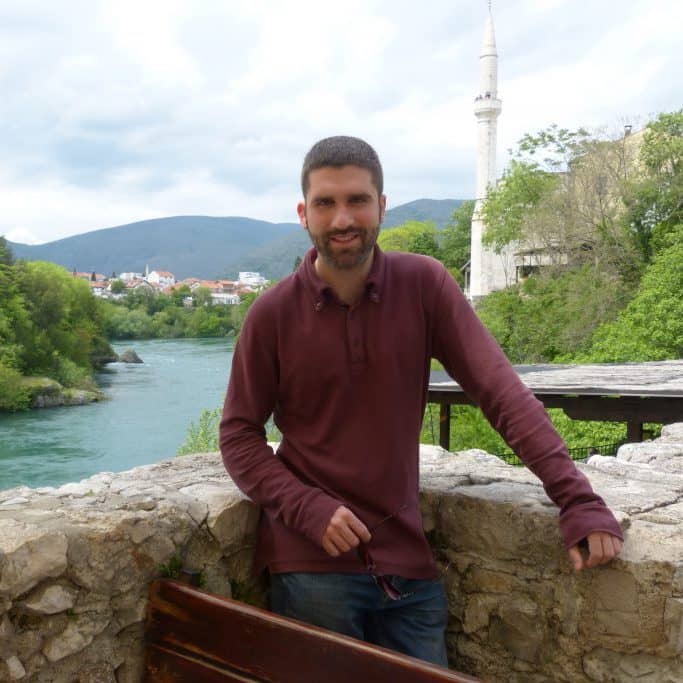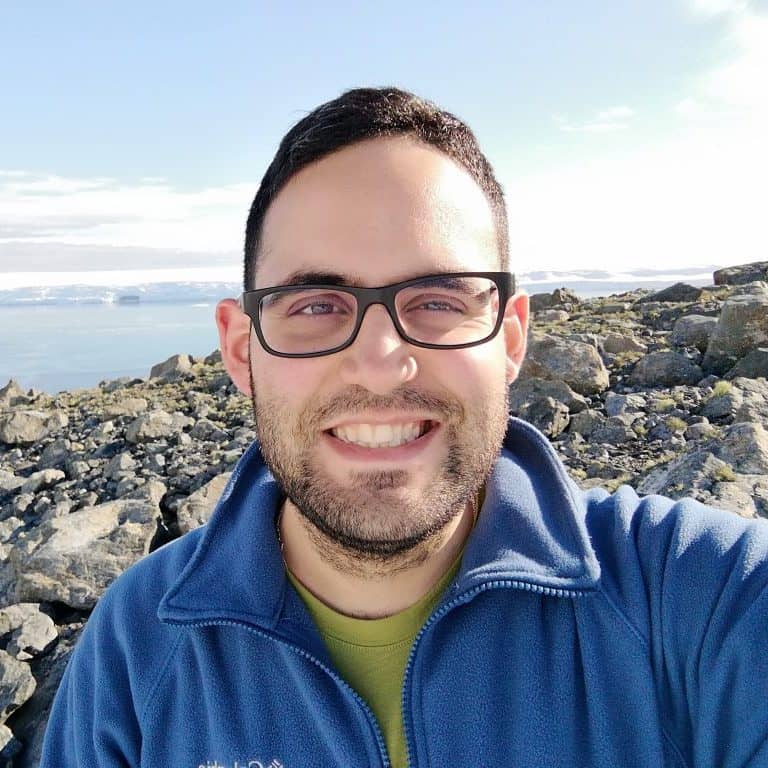Team
Dr Marc Oliva (PI)

Marc Oliva is the Principal Investigator of the Emerging Research Group “Antarctic, Arctic and Alpine Environments (ANTALP)”.
He finished his PhD at the University of Barcelona in 2009 and spent almost 8 years as postdoctoral researcher and research scientist at the Centre for Geographical Studies of the University of Lisbon (Portugal). Recently, he has started (May’17) a new professional challenge at the Department of Geography of the University of Barcelona, where he will expand his areas of research and study topics. He has already coordinated 11 research projects focused on polar terrestrial ecosystems both in Antarctica and the Arctic financed by public and private international agencies. His research interests include the study of present and past environments in Polar Regions and high mountains using a wide range of natural records (glacial, periglacial, lacustrine, peatlands). He has carried out 7 field seasons in Antarctica and 2 in the Arctic. Apart from Sierra Nevada, where he focused his PhD, he has also conducted research in other mountain regions (Rocky Mountains, Alps, Pamir, Tien Shan, Pyrenees, Cantabrian Mountains), which has provided him a wide comprehension of Earth surface processes in cold-climate environments as well as their interactions with human activities.
Until March’18 he has published 67 SCI papers, most of them have in top journals on geomorphology and paleoclimate topics, coordinating 8 Special Issues in SCI journals and 2 books.
Dr Jordi Martín-Díaz

Jordi Martín-Díaz is a PhD researcher at the University of Barcelona since September 2017. He has been conducting several teaching duties at the same university and more recently, in February 2018, he has become an associate professor at the Department of Geography.
His PhD focused on the role and the impact of the international community in the urban transformation of Sarajevo after the Bosnian War. The doctoral research included cross-cutting analyses on vulnerable areas such as the urbanisation on high gradients on the slopes surrounding the city of Sarajevo developed by people forcefully displaced. During the last decade, he has conducted several field researches in Sarajevo and a research stay in the US, at Virginia Tech.
Jordi has already published in several national and international top journals addressing issues in both fields of Human and Physical Geography. In this sense, he started his geographical career developing a combined analysis on climatology and hydrology in order to progress in the mid-long term prediction of river flows in Catalonia.
Dr Sergi González

Sergi Gonzalez is an atmospheric scientist and weather forecaster at the Spanish Meteorological Service (AEMET) and member of the Association of Polar Early Carreer Scientists (APECS).
He finished his PhD in Physics at the University of Barcelona in 2019 about mesoscalar and microphysical precipitation processes at mountain areas. Sergi has a large forecast and scientist experience in mountain areas and polar environtments and he participated in several antarctic campaigns. As a forecaster he does meteorological advice at the spanish Juan Carlos I station and provided weather forecasts to the Windsled 2017 expedition in Greenland and to the Windsled 2019 expedition in Antarctica. As a scientist he has field experience conducting precipitation measurements with disdrometer and radars at the Pyrenees and doing multidisciplinary scientific research in Antarctica.
His research interest includes, but is not limited to, mountain and polar precipitation quantification, measurements and processes, as well as multidisciplinary polar and mountain studies. Despite his still short career, Sergi investigates in two state projects and he has already published in several meteorological top journals.
Dr José M. Fernández-Fernández

José María Fernández is postdoctoral researcher at the Instituto de Geografia e Ordenamento do Territorio (IGOT, Universidade de Lisboa, Portugal). He is currently involved in the project ‘NUNANTAR’, focused on the analysis of nunataks as proxies of palaeoenvironmental evolution in the Antarctic Peninsula. He is also Honorary Collaborator of the Department of Geography at the Complutense University of Madrid (Spain).
His research is focused on the application of different methods on glaciers and palaeoglaciers as indicators of climate change and proxies of palaeoclimatic information: high-detailed geomorphological mapping, physical-based numerical models for 3D palaeoglacier reconstruction, glacier-climate models for quantitative palaeoenvironmental reconstruction and cosmic-ray surface exposure dating. He has benefited from different stays in the ‘Centre Européen de Recherche et d’Enseignement des Géosciences de l’Environnement’ (CEREGE, Aix-en-Provence, France) where he learned and specialized on the physical and chemical lab procedures of rock sample processing for the application of cosmic-ray exposure dating (10Be and 36Cl isotopes) to date climatic events with special impact on former mountain glaciers.
He has conducted fieldwork in the Iberian mountains (NW Ranges, Iberian Range, Central Range, Cantabrian Mountains, Pyrenees), Northern Iceland (Tröllaskagi Peninsula) and Antarctica (South Shetland Islands).
Julia Garcia-Oteyza Ciria

Julia is a geologist graduated at UCM (University Complutense of Madrid) in 2013. She also holds an MSc degree in Geological Risks from the Univertisty of Barcelona (2014), specialized in dating through dendrogeomorphological methodologies for flash floods and debris flows.
After finishing her master’s degree, Julia moved to Belo Horizonte, at the southern region of Brazil, where she lived for about 4 years, working in environmental consultancy companies, participating and conducting physical environment projects and studies. During her stay in Brazil, Julia also supported the management of Bicho do Mato Research Institute, being responsible for the organization and promotion of environmental related events and courses, among other activities. As head of corporate communication and pedagogical co-coordinator, Julia participated on active divulgation and assistance of the scientific projects.
On September 2019 she started her PhD on glacial oscillations and climate variability in NE Greenland.
Josep Ventura Roca

Graduate Degree in Physical Geography (1983), has developed professional activity in companies in the field of cartography and Earth Observation (ICGC- Institut Cartogràfic i Geològic de Catalunya, GeoVirtual and now in Telespazio) combining it with scientific research in high mountain areas. The geomorphological studies as a focus on glacial geomorphology, glaciers, rock glaciers, geomorphological cartography and the dissemination of natural heritage in Earth sciences, publishing various articles and cartographies.
The main theme of current research is focused on the phases of last glaciation and deglaciation in the Pyrenees (high basin of the Noguera Pallaresa) and the relationship between glaciers, covered glaciers and rock glaciers.
He also collaborates with various agencies and institutions; GRAMP (Grup de Recerca d’ Àrees de Muntanya i Paisatge – UAB, PNAP – Parc Natural de l’ Alt Pirineu and Marcel Chevalier Foundation (Andorra).
Josep Maria Bonsoms García

Josep is an early career scientist. He is a recent graduate in Geography from the University of Barcelona (2019), where he became interested in snow hydrology, climate variability and change, as well as Earth Observation techniques. After graduating, he then moved on to work in the public sector of Catalonia. He has work experience on two GIS projects analysing spatial data, mapping and doing fieldwork. In 2020, he started a master’s degree in Remote Sensing and GIS. In spring of 2021, he will start a new project at CESBIO (France), where he will work on the estimation of evapotranspiration fluxes using thermal infrared data and surface energy balance models.
His role on ANTALP is focused on examining the large-scale atmospheric drivers of snowfall and the spatio-temporal patterns of snow in the eastern Pre-Pyrenees and Pyrenees.
Dr Valentí Turu

The glacial and periglacial footprint on Mountain ranges of Iberia (the
SE Pyrenees, 1993 - 2023, the Cantabrian mountains, 2007 - 2010, the
Iberian Central System, 2015 - 2023) is his main subject of study,
looking for palaeoenvironmental conditions (2010 - 2023), assessing the
water content in current glaciers (Norway, 2007-2012) and the effects in
former glaciers in Iberia (the subglacial drainage beneath the glaciers
2000-2023) and the French Alps (2023). Merging Engineering Geology
concepts with Geomorphology, Applied Geophysics and Hydrogeology,
produce a geological point of view that merges with Geomorphology.
Dra Natalia Castañeda Arbeláez

She is an artist and researcher, PhD in Fine Arts (2022) and associate professor at the University of Barcelona. Her commitment to follow-up and document specific territories, such as mountain glaciers, enables her to merge scientific studies and artistic narratives. She uses cartography as a hybrid and emotional methodology to register the changes, walk the field and illustrate the transformation of the territory.
Natalia has led the publication "Ideal Perspective of Poleka-Kasue", cartography of the Nevado Volcán Santa Isabel, with Jorge Luis Ceballos (IDEAM). She has worked on cartography on the "Quaternary Glaciarism of the Sierra de Cadí” carried out by ANTPALP. And she exposed a project "Cuerpos glaciares" an individual exhibition in Bogotá where she shows her long research on the snow-capped mountains of central Colombia and opens a cartographic laboratory with the “Participatory Monitoring Network of Nevado del Tolima”. Her work has been exhibited in different museums and artistic spaces in Spain, Colombia and other countries.
Dr Pere Esteban Vea

PhD in geography (Universitat de Barcelona), specialized in synoptic climatology and mountain weather and climate, and mainly focused on the Pyrenees range. I have participated in different research projects as European COST (733, ES0601) or Trans-Pyrenean POCTEFA or CTP (OPCC-CLIMA, ADAPYR, FLUXPYR, NIVOPYR) and published papers in scientific journals related to atmospheric circulation classification methods and meteorological data rescue, homogenization, and trends.
Between 2007 and 2014 I was researcher and head of the Physical Environment Unit at the Snow and Mountain Studies Center of Andorra (CENMA-IEA), focusing my work on snow meteorology and mountain safety, recent climate change detection in Andorra, and climate services development (high elevations Automatic Weather Stations (AWS) networks, Andorran Climate GIS Atlas, or the Andorran Fire Weather Index (FWI) automated map).
I am currently technician at the Meteorological Service of Catalonia (SMC) at the Data Quality Control team. Furthermore, in 2016 I promoted meteomuntanya.cat, a web product centred on mountain weather forecasting and safety in coordination between SMC and FEEC (Catalan Mountaineering Federation).
